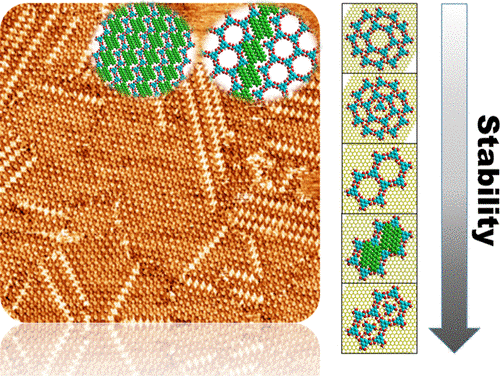Recently, Prof Shern-Long Lee of IAS at Shenzhen University has published a new research article related to supramolecular hybrid self-assemblies in JPCC (IF: 4.2). The paper title is “The mixing behavior of trimesic acid with pentacene at the liquid-solid interface”
Due to the development of scanning tunneling microscope (STM), we are therefore able to see the world at nanometer scale level. It is thus not a dream anymore regarding the visualization of atoms and molecules. Moreover, the research work of surface supramolecular networks has become a spotlight as it represents the next-generation nanotechnology.
While 2D surface self-assembly reduces the complexation of 3D crystals, the attractions between substrate and molecule add the difficulty to investigate the supramolecular self-assembled behavior.
Recently, the main research exploration shifted from mono-component to multi-component systems because the latter may give rise to novel materials properties. In this present report, prof Lee’s group found that the guest molecules (pentacenes) can selective adsorb onto one over other supramolecular networks formed by TMA molecules, yielding stable hybrid co-assemblies. STM revealed the dynamic of the mixing behavior. The results were expressed by thermodynamic principle using DFT simulations.
The co-first authors are Xingming Zeng and Dr. Ayyaz Mahmood in Prof Shern-Long Lee’s group (corresponding author). The publication was supported by NSFC (21972095).
Publication
https://pubs.acs.org/doi/10.1021/acs.jpcc.0c06891

STM revealing that the guest molecules of pentacene can selectively adsorb onto one over other polymorphic phases of self-assembled assemblies of TMA at the liquid-solid interface.



